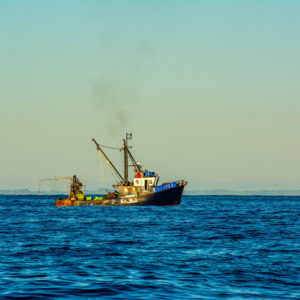Strategies to rebuild marine ecosystems and local fisheries around the northeast coast, Gisborne and Hawkes Bay were confirmed during a recent meeting held at the Gisborne Tatapouri Sports Fishing Club. Delegates to this year’s New Zealand Sport Fishing Council Annual General Meeting endorsed three policies. Each policy outlines a range of measures designed to rebuild depleted fisheries and enhance degraded ecosystems.
Healthier ecosystems mean more fish in our coastal waters, bigger fish, and brighter prospects for future generations to enjoy a meaningful fishing experience. These policies are invaluable for LegaSea, the public outreach brand of the New Zealand Sport Fishing Council. They enable our team to advocate for our collective interests knowing they have the backing of the Council’s 56 member clubs and 31,600 affiliated members. And LegaSea supporters can clearly see where we stand on specific issues.
The policies ratified at the 2014 AGM were:
LegaSea encourages other groups and individuals who seek abundance, diversity and productivity gains in our marine system to become familiar with these policies. LegaSea welcomes your support, questions, feedback and/or adoption of these policies.
Improving management practices
Historically, fisheries management has focused on single stocks such as snapper or kahawai, in specific areas. Little consideration has been given to associated and dependent species, the ecosystem in which those fish live, and our environmental impacts.
Existing legislation and international best practice demands consideration of these factors to ensure sufficient abundance so people can provide for their social, economic and cultural wellbeings.
Fisheries Management Area 1 policy
There are several processes underway that need to consider the broader management of Fisheries Management Area 1 (FMA1), between North Cape and the eastern Bay of Plenty. It makes little sense to consider in isolation a strategic management plan for the Hauraki Gulf Marine Park and individual fish stocks, including snapper.
The FMA1 policy explains the need to apply a more integrated and precautionary management approach, one that considers the entire ecosystem, including humans. Ultimately, we must better manage our marine environment to ensure we provide future generations the opportunities and resources we so gratefully inherited.
Crayfish 3 policy
Crayfish 3 (CRA3) extends south from East Cape to the Wairoa River. Management of this fishery has been highly controversial since the Minister granted a “temporary” concession to commercial fishers in 1993, enabling them to take crayfish smaller than the recreational minimum legal size. After 21 years the concession still exists, despite the serious concerns about the depleted state of the fishery.
A lack of crayfish near Gisborne means locals are denied reasonable access to the fishery and Ministry surveys show CRA3 produces the lowest average weight, at 580g, per crayfish caught recreationally. Our CRA3 policy seeks management changes to increase the size and abundance of crayfish, and ensure the community’s needs are met.
Gurnard 2 policy
In Gurnard 2 (GUR2), between East Cape and Wellington, gurnard used to be a staple catch for recreational fishers. Declining abundance has meant public catch has plummeted. Many Hawkes Bay fishers despair at the decline of gurnard and other species.
The GUR2 policy seeks to rebuild the gurnard stock to 40% of its unfished size, at least double what it is now. This can be achieved by applying a range of simple strategies to reduce the mortality of small fish. An immediate and effective response would be regulations making 125mm mesh cod ends and approved escapement panels mandatory for trawlers operating in Area 2.
In 2012 the New Zealand Sport Fishing Council ratified the Snapper 1 policy available here.





